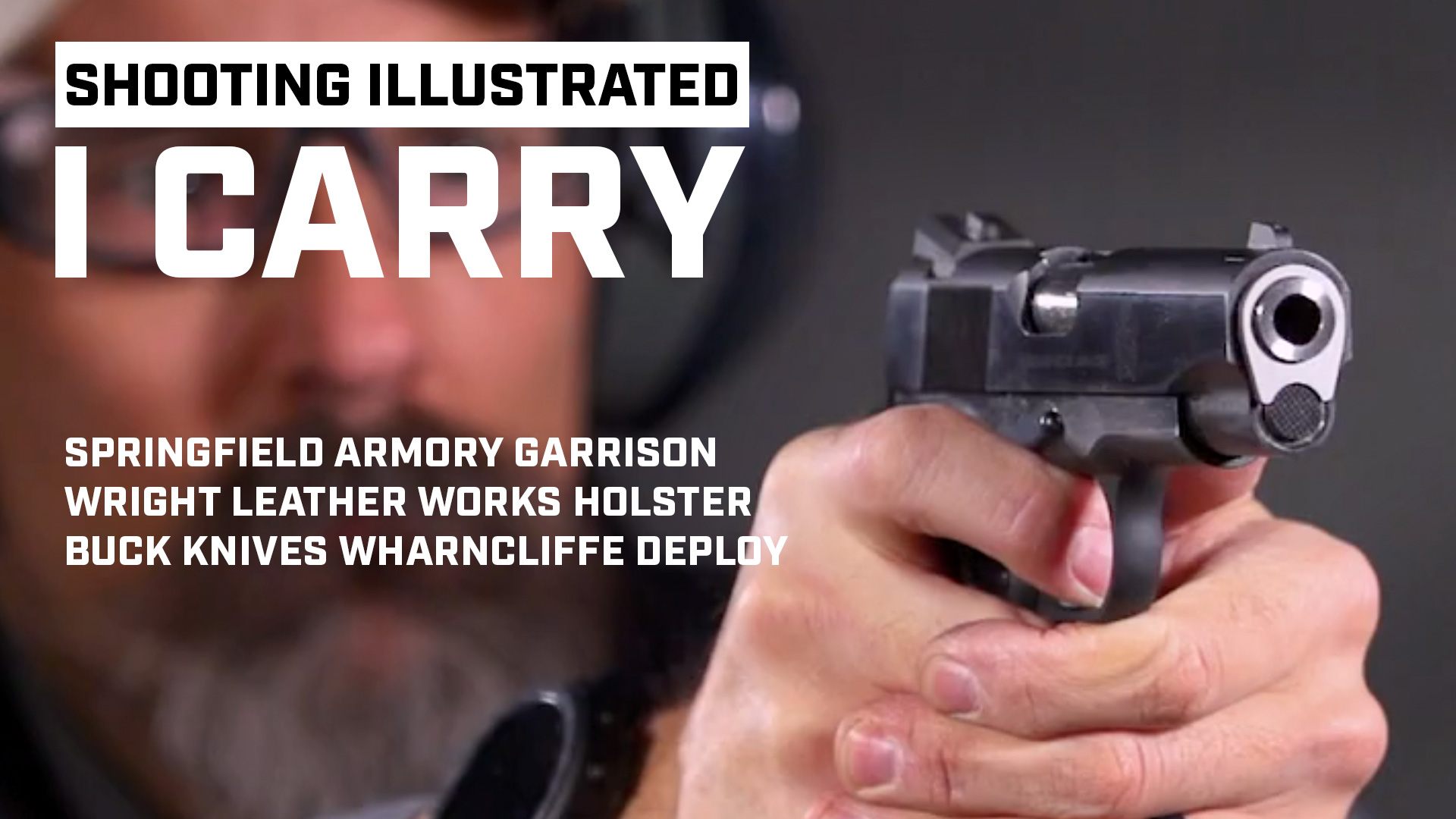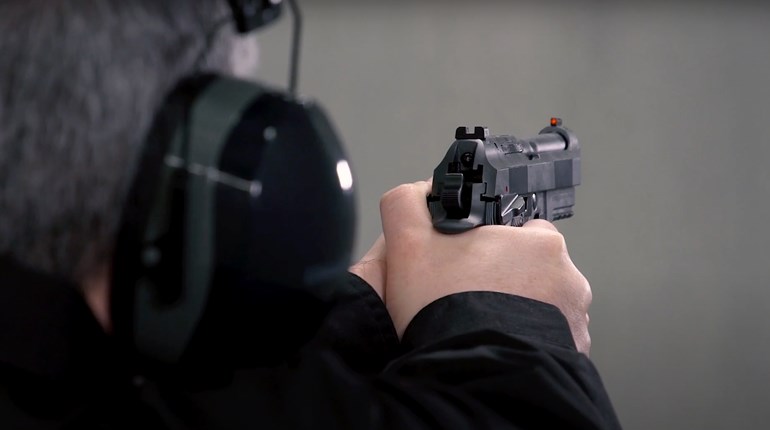
Federal’s long- awaited HST load for the .327 Fed. Mag. is finally here, and it does not disappoint.
Federal has just introduced a new load for the .327 Fed. Mag. This is a long-awaited introduction, partly because the world could use some more high-performance .327 Fed. Mag. ammunition, but also because the HST bullet has a stellar record for terminal performance. The HST is a hollowpoint bullet specifically designed to perform well after passing through a wide variety of common barriers, while still delivering good bullet upset, penetration and terminal performance. For those reasons, many law-enforcement agencies use HST ammo. But, before we get into the particulars of this load, you need to know a bit about the cartridge for which it is designed.
Some History
The origin of the .327 Fed. Mag. can be traced back to 1878, when the .32 S&W was introduced. The .32 S&W fired a 98-grain bullet at about 700 fps. In 1896, Smith & Wesson improved the .32 S&W by lengthening the case and calling it .32 S&W Long. Colt created a dimensionally identical cartridge called the .32 New Police, and the revolvers chosen for the NYPD by Theodore Roosevelt when he was Police Commissioner were chambered for it. Neither were noticeably more powerful than the older .32.
Again, with another case stretching, in 1984 the .32 S&W Long was turned into a magnum. It was called the .32 H&R Mag., and the operating pressure was upped from 15,000 to 21,000 psi. Then, in 2007, Federal created the .327 Fed. Mag. with some more case lengthening and a pressure increase up to 45,000 psi, which is 10,000 psi more pressure than that at which the .357 Mag. operates. Also, revolvers for this new cartridge could chamber and fire the .32 S&W, .32 S&W Long, .32 H&R Mag., and even the .32 ACP.
Load Details
The new .327 Fed. Mag. load from Federal utilizes a 104-grain, jacketed hollowpoint HST bullet rated at 1,500 fps from a 4-inch barrel, and it is loaded in nickel-plated cases. Nickel-plated cases resist corrosion better than brass cases, and they are typically easier to extract from cylinders. This was a wise choice with the .327 Fed. Mag., as sometimes fired, high-pressure .327 Fed. Mag. cases can be a bit sticky inside cylinder chambers.
I tested this new load from Federal out of a Ruger Single-Seven with a 4.6-inch barrel and it delivered an average muzzle velocity of 1,543 fps with a standard velocity deviation of 17 fps. In total, I fired 100 rounds, and I had no unusual issues. From a rest at 10 yards, it was easy to print five-shot groups you could cover with a quarter, and the extraction of the fired cases was smooth and easy. If you’re wondering how this load will perform from shorter barrels, based on the extensive testing of .327 Fed. Mag. ammunition that I’ve conducted, I think you could expect velocities to be between 25 and 100 fps slower.
Terminal Performance
To get an idea of the type of terminal performance that could be expected from this load, I fired four shots into multiple blocks of Clear Ballistics that were covered with two layers of denim. The average penetration for all four shots was 14 inches. In fact, the penetration depth of all four shots only varied by three-quarters of an inch. Given the general consensus that 12 to 18 inches of penetration is ideal, this load falls within that window.
Penetration is critical, but not the only consideration. One way to compare the terminal performance of defensive-handgun ammunition is to look at what I call the crush cavity. The crush cavity is simply a volumetric measurement determined by the depth of penetration and the diameter of the upset bullet. In other words, it’s the volume of the hole created by the bullet. Since typical defensive-handgun cartridges do not produce enough velocity to substantially damage tissues beyond the hole they create, this is a practical method of comparison.
With the 104-grain .327 Fed. Mag. load, the bullets had an average recovered diameter of .54 inch. That equates to an expansion factor of about 1.7 times the original diameter, and generally anything beyond 1.5 times the original diameter is considered good. When you compute the crush cavity for a bullet that penetrates 14 inches and has a recovered diameter of .54 inch, you get a volume of 3.2 cubic inches. In other words, this load could be expected to damage that much tissue.
There are other quality self-defense loads for the .327 Fed. Mag. Federal also offers an 85-grain Hydra-Shok load rated at around 1,400 fps. In my testing this load penetrates about 17 inches, but bullet upset is less at around .4 inch and average crush cavities with this load measure out to about 2.2 cubic inches. However, recoil is substantially less than the 104-grain HST load. The Speer 100-grain Gold Dot loads that I’ve tested do better. Penetration is similar but there’s more bullet upset and crush cavities measure out at about 2.8 cubic inches. The Speer load also recoils much like the new 104-grain HST load.
How does this compare to the potential damage that can be seen with other common defensive-revolver cartridges? The 104-grain HST load for the .327 Fed. Mag. will create crush cavities that are about 30 percent larger than the best .32 H&R Mag. loads, but the best comparison to the .327 Fed. Mag. is the .38 Spl. Few .38 Spl. loads can produce a crush cavity of 3.0 inches, and the best .38 Spl. loads will deliver similar crush cavities to the 104-grain .327 Fed. Mag. HST load. As far as a comparison to the .357 Mag., the best performing .357 Mag. loads will create crush cavities twice as large as the .327 Fed. Mag.’s HST load, but with about 40 percent more recoil.
Summary
The .327 Fed. Mag. cartridge essentially fills the gap in terminal performance between the .38 Spl. and the .357 Mag., and in most revolvers it does so with six rounds as opposed to five. It is probably my most used revolver cartridge, but it is not, and never will be, a .357 Mag. It will, however, easily outperform both .38 Spl. and .38 Spl. +P loads while producing similar recoil. All of the above, combined with the ability of a revolver chambered in .327 Fed. Mag. to also chamber and fire four other (less powerful and therefore more fun with which to practice) .32-caliber cartridges, makes it a solid choice for a personal-protection revolver.





































